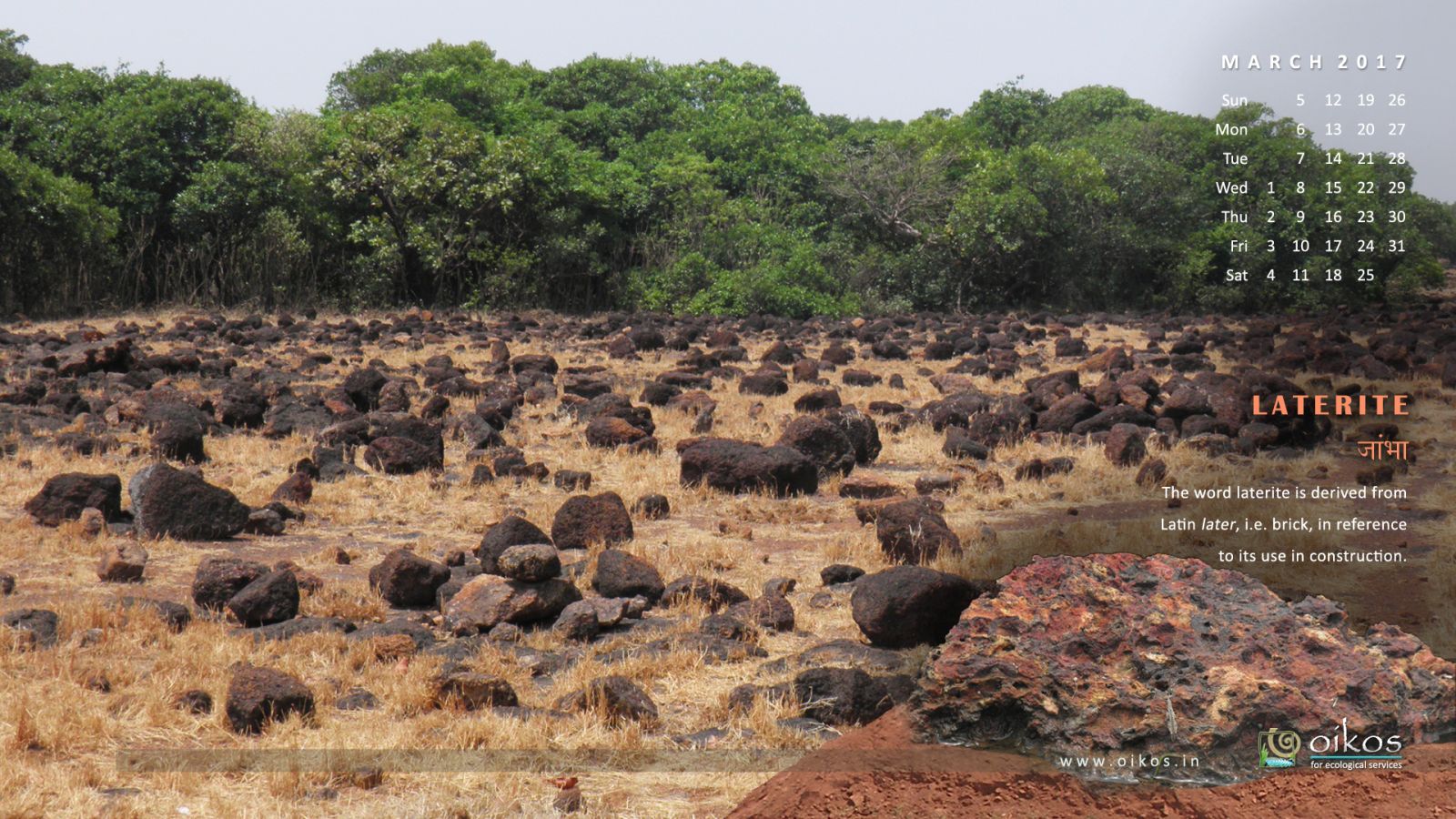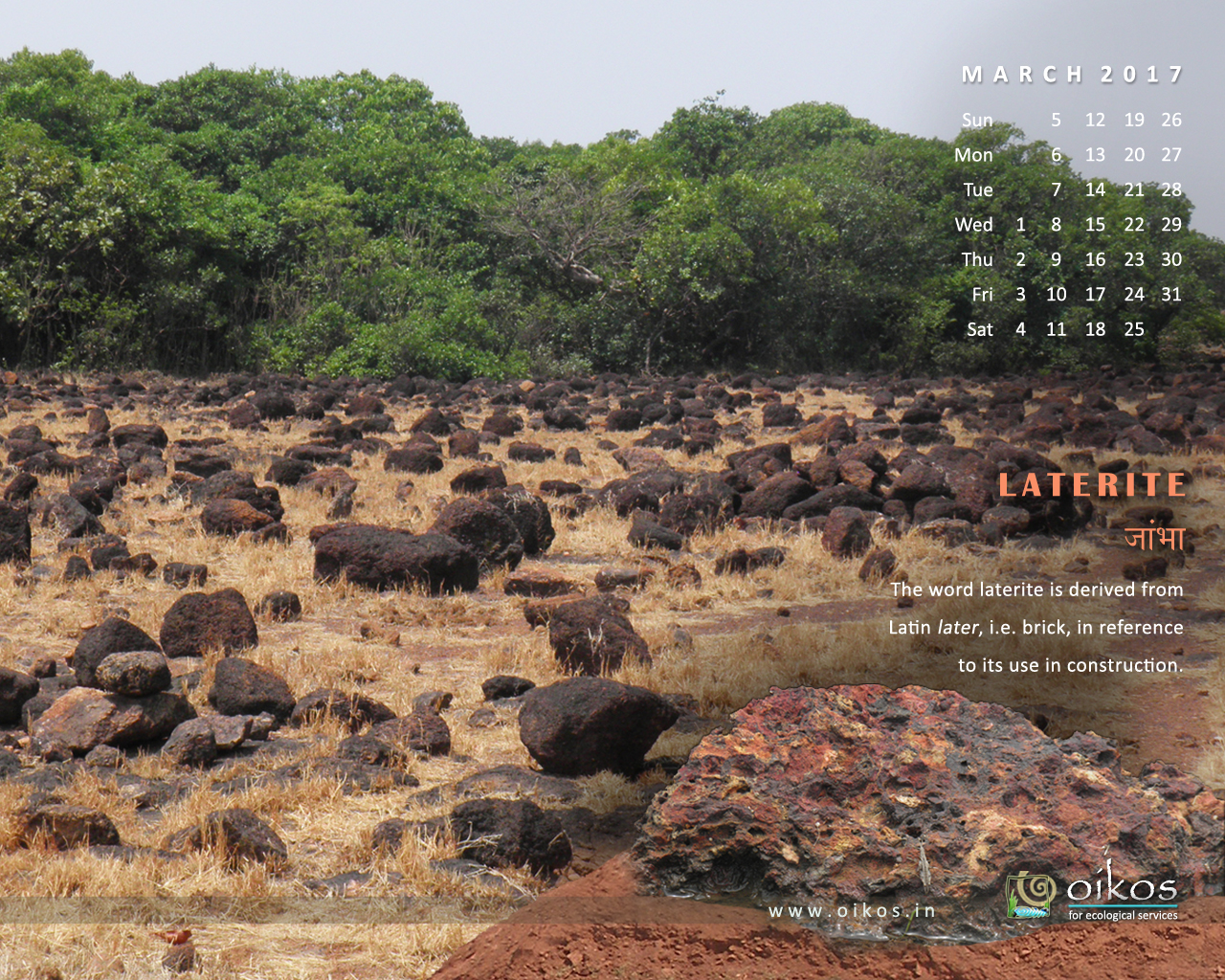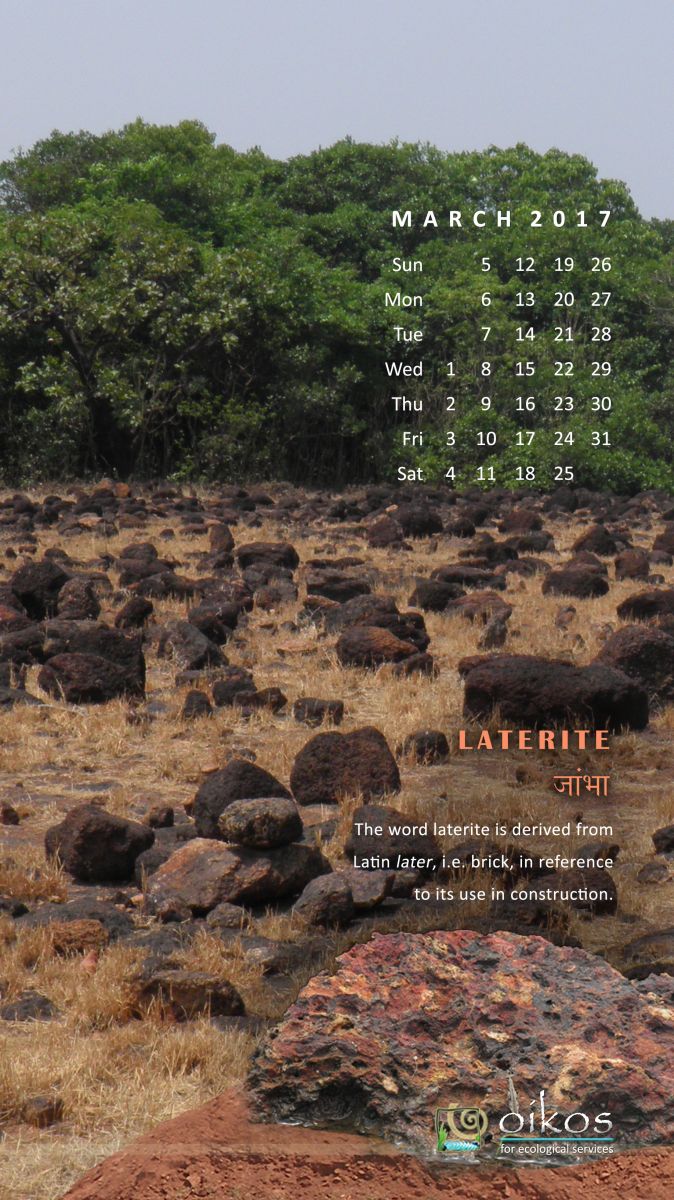Mar - 2017
Greetings from oikos !
LATERITE, locally it is known as जांभा – Jambha, is rock type with high percentage of iron
& low percentage of aluminium (variability in percentages found across the regions).
Word laterite derived from latin word Later meaning Brick, stating its use as brick.
It was first described by Buchanan- Hamilton in 1807 at Angadipuram, Kerala.
Laterites are of rusty-red coloration, because of high iron oxide content.
Those are formed in hot and wet tropical areas.
The majority of the land area containing laterites is between the tropics of Cancer and Capricorn.
They develop by intensive and long-lasting weathering of the underlying parent rock
which could be sedimentary or metamorphic or igneous rocks.
Heavy rainfall followed dry period initiates this process of weathering and leaching of parent rock.
An essential feature for the formation of laterite is the ‘repetition’ of these wet and dry seasons.
During this period leaching of parent rock happens which leaves behind the more insoluble ions,
predominantly iron and aluminium giving it rusty red color.
Thus it is sedimentary, non transported, residual rock which is porous in nature!
Freshly quarried laterite rock is soft and once exposed to air it becomes hard.
Lateritic Rocky Outcrops :
Lateritic Rocky Outcrops or Plateaus, locally called सडा– ‘sadaa’ are very important and unique habitats found in Sahyadri & Kokan.
Lateritic Rocky Outcrops or Plateaus, locally called सडा– ‘sadaa’ are very important and unique habitats found in Sahyadri & Kokan.
Scarcity of soil and harsh physical conditions lead to formation of vegetation community dominated
by grasses and herbaceous flora along with habitat-specialist amphibians and reptiles.
Many of these species of flora and fauna are endemic to this habitat and not found elsewhere.
Biodiversity changes significantly as per seasons. Because of monsoon, regeneration of ephemerals, i.e. plants with short life cycle of 2 to 4 months, is initiated. They are mostly mass blooming herbs with bright colors favoring insect pollination. So monsoon brings life to these plateaus. After monsoon, all these ephemerals die and their seeds remain dormant till next monsoon.
These outcrops offer a number of ecological services to nearby villagers.
Being porous, water is drained through the layer of laterite and
comes out as a spring wherever it hits hard rock.
Thus providing water source to many human, non-human communities.
Being reserves of bauxite, few lateritic plateaus are under serious threat due to mining.
But, these being very special ecosystems, giving refuge to very special endemic species,
must be protected completely from any human interference.
Uses for humans: Popularly used in construction, caves, wells, temples and valued for iron & bauxite ore.
Regards,
Ketaki & Manasi
Please Note -
This Email is a part of awareness campaign initiated by oikos, Pune. Write to us for your valuable feedback.
oikos have been sending ‘Desktop calendars’ since January ’06 with various themes, which can be downloaded from our website.
If you are not willing or not the correct recipient of this Email, kindly reply this mail with subject 'unsubscribe'.
Thanking you for your precious time.
Spread a word !!Forward to nature lovers !
Click on any of the desired options below to get appropriate image.
Save it to computer and set it as desktop background for your computer monitor.
Oikos for ecological services
Ph. 020-25451875
Web: www.oikos.in





